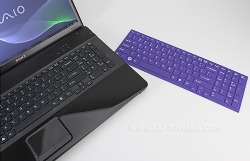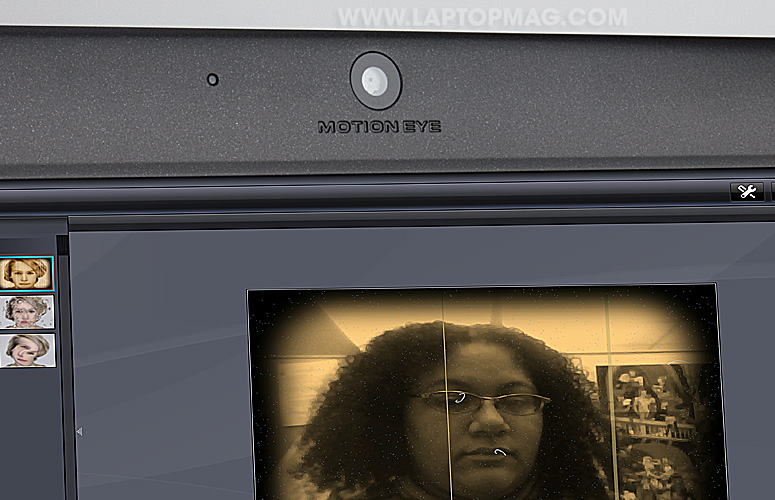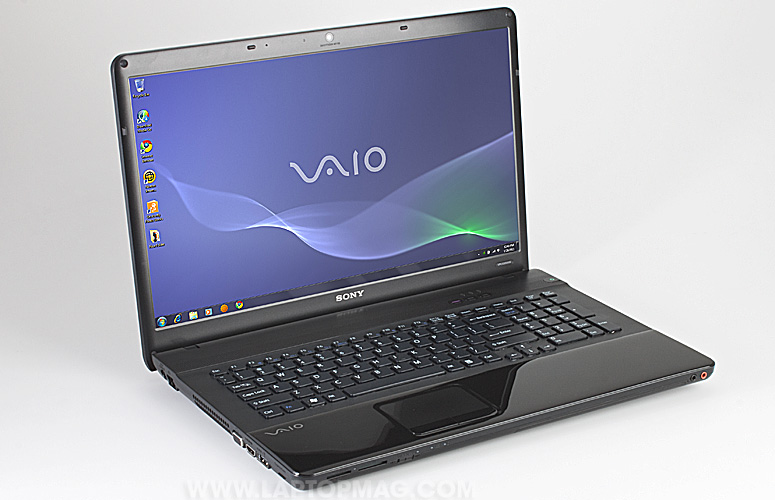Why you can trust Laptop Mag
Configurations
Click to enlargeSony offers several configuration options for the EC Series plus one Ready to Ship model. The specs on our review model represent the $749 base configuration. Customers can choose a more powerful Core i5 (480M and 580M) or Core i7 CPU, ranging from $80 to $330. Hard drive options include 500GB (5,400 and 7,200 rpm), 750GB, or 1TB (5,400 and 7,200rpm) for $80-$270 more. Upgrading to 6GB of RAM costs $100; 8GB goes for $200.
A more powerful ATI Mobility Radeon HD 5650 GPU and 1GB of RAM costs $50 more; a 1080p display is a $100 option. A read-only Blu-ray drive costs $70; a read/write drive is $150; and a large capacity battery is $50 more.
The Ready to Ship model--VPCEC4AFX/BJ--costs $1,119 and comes with a Core i5 480M CPU, 750GB hard drive, a 1080p display, and a Blu-ray drive (read only for Blu-ray discs).
Software and Warranty
Sony includes a half dozen VAIO-branded utilities and software for users, many of which are quite helpful. The VAIO Control center is a pared-down control panel that's akin to what this feature looked like under Windows XP. VAIO Care is a diagnostics tool to help customers troubleshoot and fix issues. VAIO Data Restore Center, Media plus, Transfer Support and VAIO Update round out the list.
Sign up to receive The Snapshot, a free special dispatch from Laptop Mag, in your inbox.
On the productivity front, the EC includes Evernote and Office 2010 Starter. Media tools include the Picture Motion Browser, Arcsoft Webcam Companion, and Roxio Easy Media Creator 10 Light. And, as with all VAIO PCs, you'll find Google Chrome as well as Internet Explorer for browsing.
The multimedia package available with the EC comes with Premiere Elements and Photoshop Elements for editing video and images, plus Acrobat 9 Standard for creating and editing PDFs.
Sony protects the VAIO EC with a standard one-year limited warranty plus onsite/in-home service. To see how Sony fared in our Tech Support Showdown, click here.
Verdict
At $749 the VAIO EC is affordable for a Sony notebook, but is it a good deal? There's no denying that the keyboard is top-notch, and there's enough muscle here for both productivity chores and mainstream games. However, there are better deals out there. A Dell Inspiron 17R with similar specs (Core i3 CPU, ATI Mobility Radeon HD 5740 graphics, 4GB of RAM, and a 500GB hard drive) can be had for $50 less, as can a Toshiba L670 with a more powerful Core i5 processor, integrated graphics, 4GB of RAM, and a 500GB hard drive.
We wish the screen had better viewing angles and that the speakers were more powerful, but overall the VAIO EC is an attractive notebook that provides solid performance for the price.
Display and Audio
We appreciate that Sony equipped the VAIO EC with a sharp and colorful 1600 x 900 display, especially since many 17-inchers skimp with 1366 x 768 panels. We did have to contend with our reflection, but otherwise watching HD video was pleasurable.
Unfortunately, the glossy display has fairly narrow viewing angles. Moving 10 to 20 degrees away from front and center created some color distortion. We also had to tilt the display down when watching video from a few feet away, making it difficult for more than two people to comfortably share the screen.
Click to enlarge
The system's speakers sit on top of the deck, which should indicate loud, clear audio. Unfortunately, the VAIO's volume wasn't as powerful as we'd like. We had to turn it up to 75 percent to fill a small room with some background noise and 100 percent when watching Hulu.
Ports and Webcam
The VAIO EC has three USB ports located on the right front of the machine and one combo USB/eSATA port on the left. You'll also find VGA plus HDMI, ExpressCard/34 slot, SD Card, Memory Stick, and a DVD drive.
Click to enlarge
Click to enlarge
This notebook's webcam didn't impress us, capturing grainy, washed out still and video images. The only good news on this front is the Arcsoft Webcam Companion, which includes fun effects and frames plus a feature that allows users to turn the webcam into a monitoring system.
Click to enlarge
Performance
The VAIO EC's 2.53-GHz Intel Core i3-380M processor and 4GB of RAM earned a score of 5,453 in PCMark Vantage, which measures overall performance. This doesn't quite best the desktop replacement average (5,725), but this category is heavy on Core i5 and Core i7 systems. The score also lags behind the Gateway NV7901u's score of 5,814 ($849/Core i5), but fared better than the Toshiba Satellite A665 ($899/Core i5), which only got 5,224 marks.
The 320GB, 5,400-rpm hard drive completed the LAPTOP File Transfer test in a little more than 3 minutes, for a score of 28.0 MBps. Again, this is under average (31.7) but above the Gateway NV (21.0) and the Satellite A665 (23.2). The boot time of 64 seconds was just one second under the average.
Consumers looking for a notebook that can handle some light video editing will be pleased with the VAIO EC's speed. It took just 1 minute and 5 seconds to transcode a 114MB MPEG-4 clip to AVI, just under the category average.
Graphics
The discrete graphics card in the VAIO EC--an ATI Mobility Radeon HD 5470 and 512MB of VRAM--delivered a score of 4,112 on 3DMark06. This is well below the category average (7,995), and both the Satellite A665 (7,002; NVIDIA GeForce GT330M/1GB) and the Gateway NV (7,418; ATI Mobility Radeon HD 5650/512MB) scored higher.
Still, you'll be able to play mainstream games at decent clip. When we played World of Warcraft at the full resolution (1600 x 900) we saw frame rates of 37 fps with settings at Good (the recommended setting) and 20fps with everything maxed out. The speeds aren't blazing, but they're playable. In the graphically demanding Far Cry 2 we measured 47 fps at 1024 x 768 (autodetect resolution) but a low 15 fps at maximum res and graphics.
In our hands-on time we were able to play full-screen 1080p videos from YouTube with no hitching, as well as clips from the hard drive.
Battery Life and Wireless
With a runtime of 2 hours and 54 minutes, the VAIO EC probably won't see much time away from an outlet, but it's better than the desktop replacement average (2:40). The Toshiba Satellite A665 has nearly the same endurance (2:55), and the Gateway NV did just a bit better at 3 hours even.
The Atheros AR9285 802.11 Wi-Fi card in the VAIO EC offered below average throughput. At 15 feet from our router, it transferred data at a rate of 30.3 Mbps, just under the 31 Mbps average. At 50 feet, throughput dropped off to just 14.3 Mbps, which is 5 Mbps slower than the desktop replacement average.
Want a big screen without blowing your budget? Take a good look at Sony's VAIO EC. This 17.3-inch notebook packs a Core i3 processor and ATI graphics, providing plenty of power for everyday tasks--with enough oomph for some gaming on the side.
Design
The VAIO EC isn't as flashy as other Sony notebooks such as the F Series, but overall we like the clean look. The laptop sports a matte black lid and a glossy black deck with specks of silver that glitter when they catch the light just right. A green, glowing power button adds a dash of color.
Measuring 16.1 x 10.8 x 1.3 inches, the VAIO EC isn't as thin as the 17-inch MacBook Pro, but it's a lot less chunky than an 18-inch monster such as the Toshiba X505. At 6.8 pounds, the EC is also on the lighter side for a desktop replacement; the HP Envy 17 weighs in at 7.5 pounds.
Click to enlarge
Heat
In most areas, the VAIO EC stayed cool. Temperatures between the G and H keys and the touchpad were 88 and 83 degrees after watching a Hulu clip for 15 minutes. The middle of the underside only reached 84 degrees. The area by the vent reached a hot 108 degrees, but since it's on the left side you won't notice it when computing at a desk.
Keyboard and Touchpad
The VAIO EC offers a large and comfortable keyboard and number pad and even has room to spare. The keys are all well sized and in the right place, and they provided a snappy spring when we were typing.
Click to enlarge
We wish the 3 x 1.8-inch touchpad was larger, as there's plenty of space on the deck. The touch surface is dimpled and sits in a shallow well, making it easy to find without looking. However, we found the Alps touchpad somewhat wonky. For example, selecting text sometimes took multiple attempts. (You have to be careful not to stray into the scroll area.) The two distinct mouse buttons were springy and responsive, though.
K. T. Bradford writes about laptops, apps, and ebook readers for Laptop Mag. She has written reviews of some of the most iconic laptops from the last decade and more, covering models such as the Acer Aspire One, the Samsung R580, and the Lenovo IdeaPad S205. Some of her other reviews include MSI, HP, Dell, and Asus notebooks.







